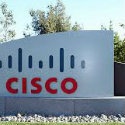Network operators need to be able to order up network resources as easily as they now do with compute and storage in the cloud, says Dave Ward, Cisco CTO of engineering and chief architect.

Just as cloud customers now order up compute and storage on demand, service provider customers need to be able to order up their networks on demand, says Dave Ward, Cisco CTO of engineering and chief architect.
"Networks on demand" are the future of SDN, which is currently in the phase of "reactive networking," as it has been for five years, Ward tells Light Reading.
"The conversation is now turning to the data coming out of the [wide area] network, the LAN and the edge," Ward says. Telemetry information gathered by the network will feed into "data lakes" for use by network analytics tools, which then configure the network automatically, optimizing it for the needs of applications.
It's a circular cycle of the network producing data, which is used to optimize the network, which then produces more data for further optimization, Ward says. The process goes from the network, to analytics, to services, and back to the network again.
"What we've created is a bus between the analytics, the SDN and service orchestration, so that when there are changes, the network and the system can react," says Ward, who is scheduled to discuss his vision of reactive networking and network-on-demand capabilities in a presentation at the MPLS/SDN/NFV World Congress in Paris today.
The next step, this year and next, is to make the network available as part of the platform-as-a-service layer, so that app developers can order up network resources along with the compute, RAM and storage, Ward says.
Networking needs should be invisible to the developer, he says. "They just want to deploy their own workflows and service chains -- they just want it to be taken care of."
Analytics and network data are key to the transition. "By the end of this year, everyone will talk about spewing data out of the network into some kind of data lake format," Ward says. Data will be able to create the kind of "reactive wheel" Ward describes. "It's almost outstandingly obvious," he says.
As you'd expect, Cisco has been developing the technology it believes can deliver networks on demand: It recently open sourced a virtual switch and router, the Vector Packet Processor, to the recently formed FD.io community to provide network operators with a modular and high-performance infrastructure using existing Intel Corp. (Nasdaq: INTC)-based systems. The VPP supports 480Gbit/s throughput in 24 cores, with another 48 available. "It's pretty much everything you need to deploy a virtual network and it's screamingly fast," Ward says. (See Cisco's vSwitch Makes the Grade and Linux Foundation Forms FD.io.)
OSS and BSS systems will also need to evolve to support the vision, Ward says.
Cisco isn't alone in pursuing the on-demand network vision. It's a key tenet of New IP networks, pursued by AT&T Inc. (NYSE: T), Verizon Communications Inc. (NYSE: VZ), Equinix Inc. (Nasdaq: EQIX) and other service providers, as well as vendors.
But Cisco is in a special position to push that agenda, because of its enormous industry influence. This year, it's been making changes.
Cisco recently announced a sweeping reorganization of its enterprise networking infrastructure to emphasize open interfaces and software over proprietary hardware, to enable cloud, mobility and analytics. (See Cisco Rewrites Enterprise Networking DNA in 'Monumental Shift'
Want to know more about SDN? Visit Light Reading's SDN technology content channel.
Cisco purchased CliQr for $260 million to bolster its hybrid cloud capabilities. (See Cisco Buys CliQr for $260M in Hybrid Cloud Push.)
It also announced HyperFlex, its entry into the hyperconverged market. (See Cisco Storms the Hyperconverged Data Center.)
And it purchased Jasper Technologies for $1.4 billion, not just for its technology of managing Internet of Things devices but also to gain expertise in delivering cloud services rather than products. (See Cisco Looks to Jasper Acquisition to Transform Enterprises – & Itself.
All of these changes have the goal of enabling network operators to make their networks more agile.
— Mitch Wagner, 


 , West Coast Bureau Chief, Light Reading. Got a tip about SDN or NFV? Send it to [email protected].
, West Coast Bureau Chief, Light Reading. Got a tip about SDN or NFV? Send it to [email protected].
Read more about:
EuropeAbout the Author(s)
You May Also Like











